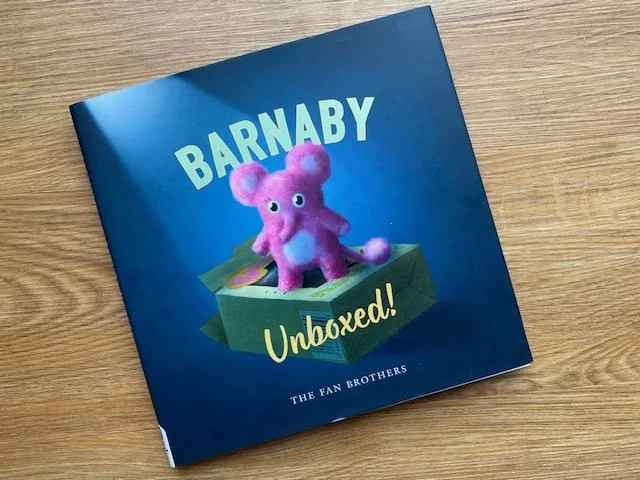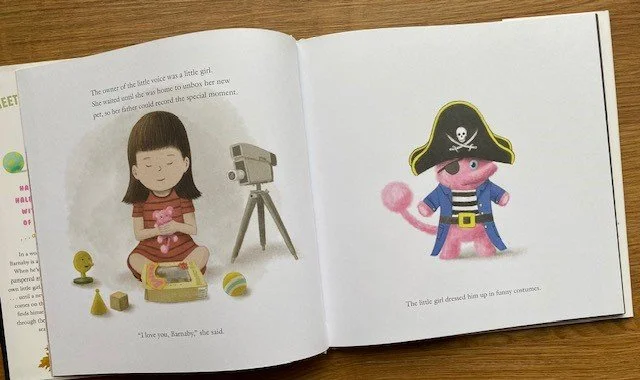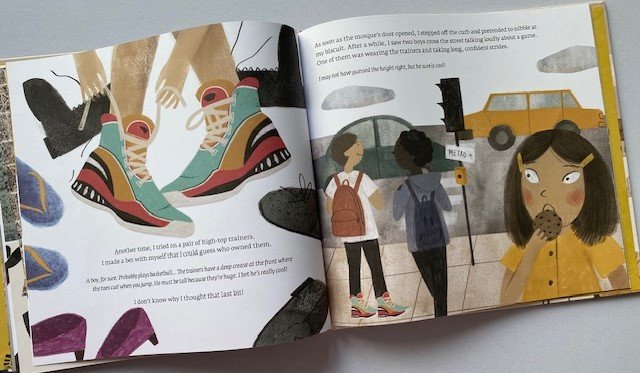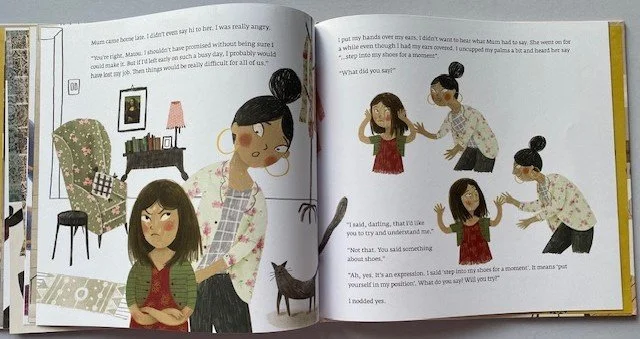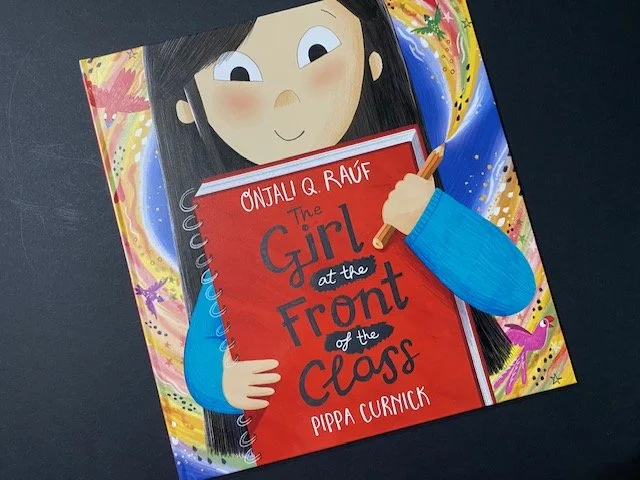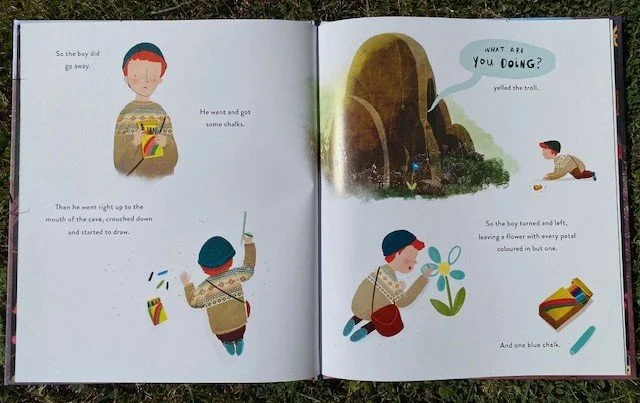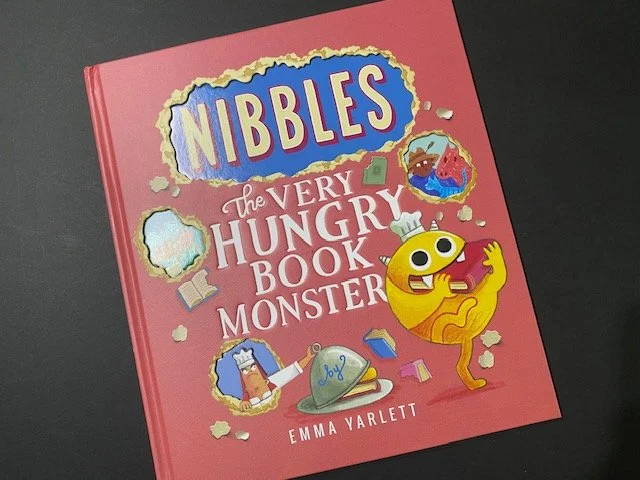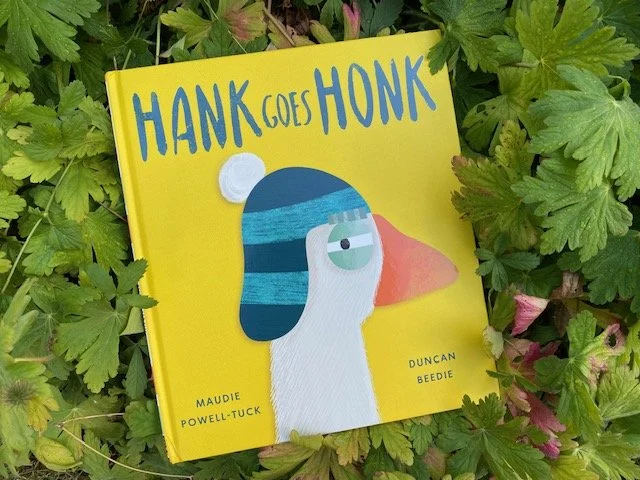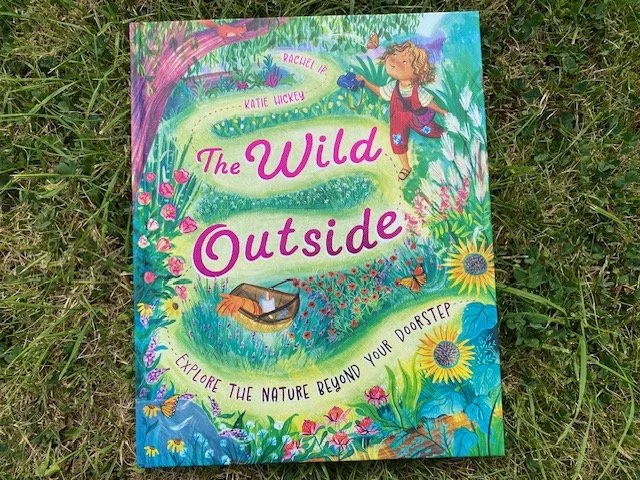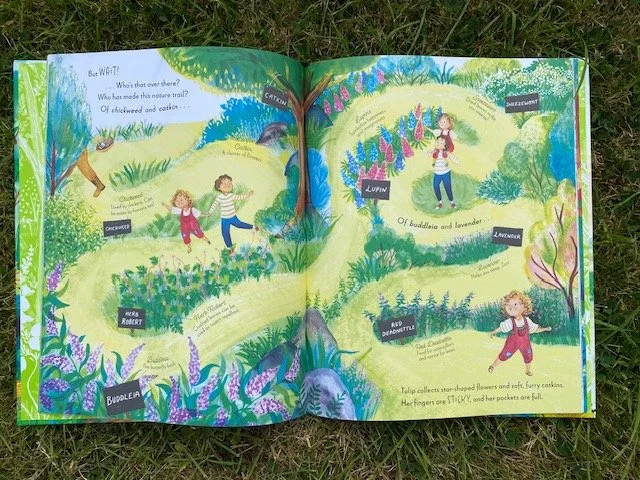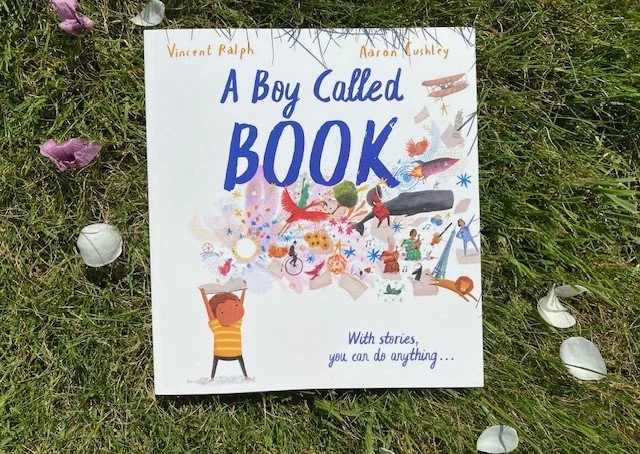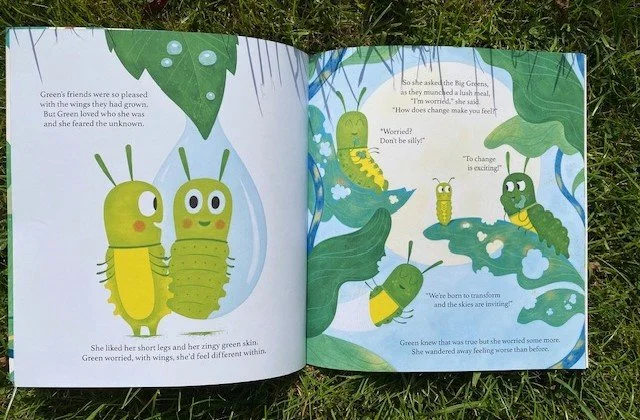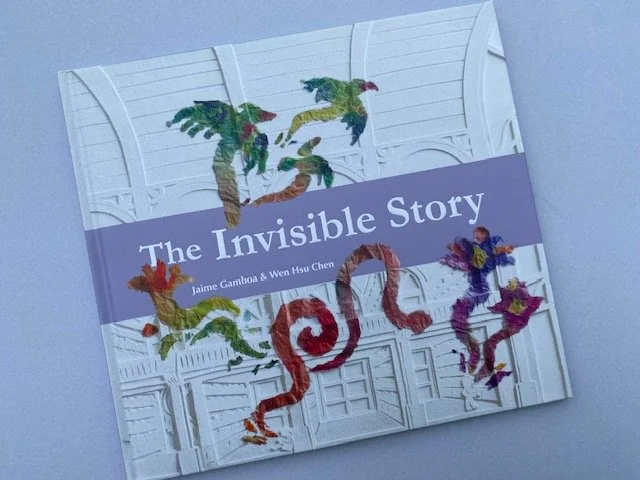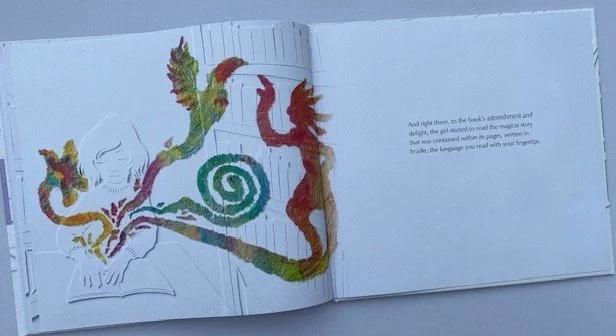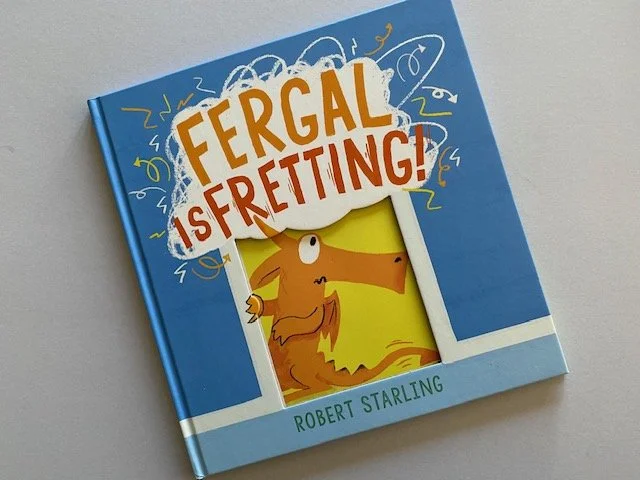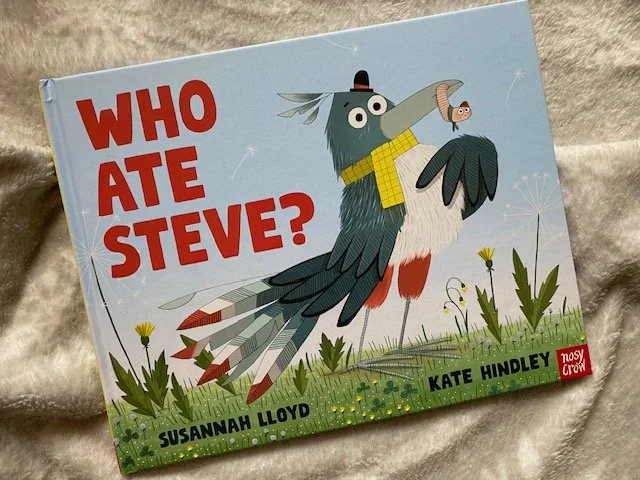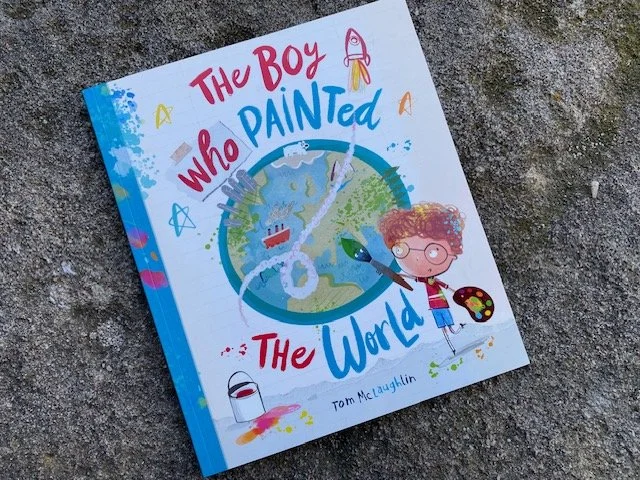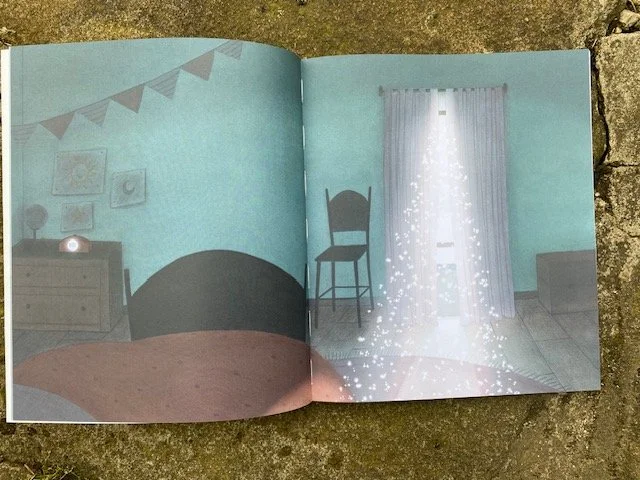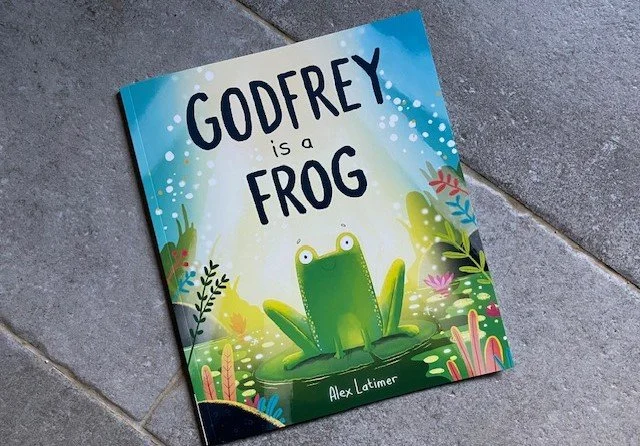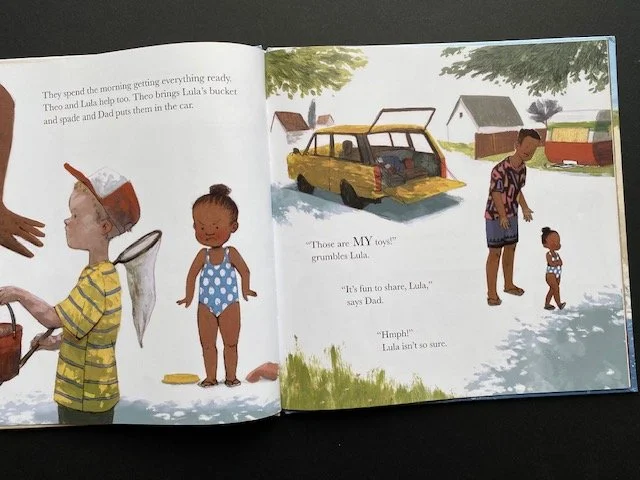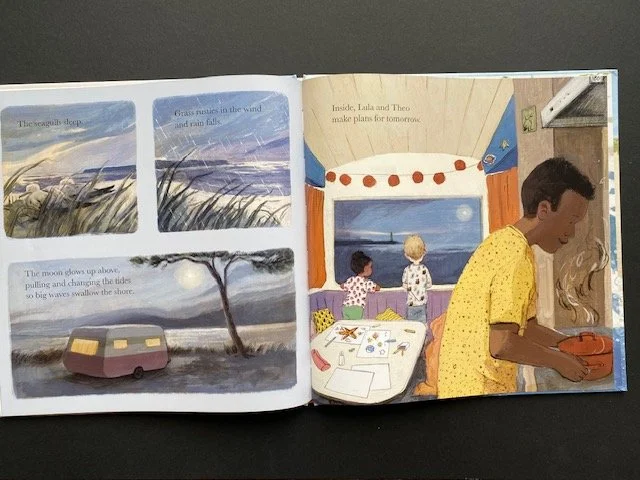
Reviews
There are so many incredible books available at the moment that it is impossible to read them all, no matter how hard I try! Here are my thoughts about some of the books I have read and how I think they could be used in school as well as Q and A sessions with authors and illustrators.
Barnaby Unboxed!
In the newly reopened ‘Perfect Pets’, Barnaby, ‘half mouse and half elephant, with just a dash of flamingo’, thinks he is the most perfect pet of all- and yet, he is the last one of his kind on the shelf. One day, whilst worrying he will never be chosen, a little girl picks him. Taking him home, the two become inseparable until, one Saturday morning, whilst watching television, an advert for the new ‘Rainbow Barnaby’ is shown and the little girl decides she wants one. When her father refuses to buy her the new pet, she seems to lose interest in her Barnaby. Her father now takes him for his walk and one rainy day, Barnaby slips unnoticed off his lead, planning to run away ‘just long enough for people to miss him’; however, when he is chased by a cat, he finds himself lost and alone. Time passes and, although he meets other lost and forgotten pets, he is determined to find his way home to the little girl. Supported by the squirrels in the park who show him their ways, Barnaby begins to forget his old life until he spots a little girl pinning ‘missing’ posters to the trees…
Once again, The Fan Brothers have produced a perfect picture book combining sensitive storytelling, moments of gentle humour and, in this case, a strong message about the responsibility and commitment involved when taking on the care of a pet. The book has so much potential for developing ideas and work in school as well as for being enjoyed at story time!
Children could have great fun inventing their own ‘perfect pets’ which might join Barnaby on the shelves, creating character profiles and developing personalities and names for their creatures. Barnaby is just adorable, with his big eyes, puffy tail and soft as candyfloss fur- and yet, he is full of worries as he compares himself to the other ‘new and exciting’ pets which are on offer. At this point of the story, role play or hot-seating could be used to explore Barnaby’s feelings, but also those of some of the other pets who might have similar concerns, and develop some good advice to offer anyone feeling downhearted or under-valued.
The story is also perfect for considering the long term dedication and commitment needed when adopting a pet. The collection of ‘lost or forgotten’ pets in the rubbish bin is a sad indictment of how fashions and fads can lead to the casual neglect and discarding of creatures in need of love and care.
However, eagle-eyed readers will notice that there are signs that the little girl has not forgotten him. Almost as soon as he was lost, posters can be seen seeking his return, filling the reader with hope that the two will be reunited once more.
As usual with any book from the Fan Brothers, the illustrations are fabulous- full of details to notice and things to wonder about. The spread showing the row of shops where Perfect Pets can be found is almost identical to that in ‘The Barnabus Project’- except that the barber’s shop has now closed down and the Coffee Palace is all boarded up and the last but one picture showing Barnabus and the little girl enjoying their walk in the park also appears in the first book and you can see Barnabus and his fellow escapees watching them as they walk by.
A gorgeous, heart-warming read- not to be missed!
Barnaby Unboxed!
The Fan Brothers
Frances Lincoln ISBN: 978-1836001607
You can read my review of ‘The Barnabus Project’ here, ‘It Fell From the Sky’ here, ‘Lizzy and the Cloud’ here and ‘Ocean Meets Sky’ here.
Blog Tour: Step into my Shoes
Today, I am very happy to be taking part in the Blog Tour for ‘Step into my Shoes’, a lovely picture book from Lantana, which paves the way for plenty of discussion!
Matou lives just outside Paris, in a place she dismissively thinks no one has ever heard of. Now that her mum works in the city, she walks to and from school by herself. One Friday, having been let out of school early, as she passes the mosque, she notices a ‘sea of shoes’, including a pair of sports shoes with orange laces. Tempted by the fact they are nearly her size, she tries them on. Having returned them, she notices the boy the shoes belong to and concludes the shoes are pristine because he doesn’t walk much. From then on, Matou regularly tries on different shoes outside the mosque and ponders on the lives of their owners until one day, excited by the fact that her mother will be home early, she goes straight home…only to become upset as her mother arrives late. But when she steps into her mother’s shoes, she gains a new perspective, learning what it truly means to ‘step into someone’s shoes’.
‘Step into my Shoes’ is a wonderful story for developing empathy and compassion. Matou literally explores the expression ‘to step into someone else’s shoes’, initially as a way of entertaining herself on her journey home, but ultimately coming to understand her mother better. Children will really relate to her curiosity as she wonders about all the footwear left outside the mosque as those inside pray. Initially, for those unfamiliar with this custom, there will be conversations about this practice, offering opportunities to deepen understanding - and make links with other religions and cultural traditions.
But the real joy of the story is that it encourages readers to pause and think - no matter how frustrated, angry or upset- that misunderstandings can be seen from another perspective and that ‘stepping into someone else’s shoes’ allows us to understand them better, an important lesson which many adults could do with learning! The illustrations add much to the text, making it easy for children to choose different pairs of shoes and explore their ideas about the owners and to pause and consider Matou’s feelings at different points in the story. Interest in France might also be piqued by various details in the pictures- the Eiffel Tower, Sacre-Coeur, the pyramid of the Louvre, signs for the Metro, the shop names, Lautrec’s Black Cat, the Mona Lisa- there is much to explore!
A lovely book to spend time with!
Step into my Shoes
Alkisti Halikia, translated by Konstantine Matsoukas, illustrated by Fotini Tikkou
Lantana ISBN: 978-1915244956
The Girl at the Front of the Class
When a new girl arrives in his class, Adam is determined to make friends with her. However, she doesn’t want to play or make sandcastles in the sandpit- she just draws sad pictures. Seeking advice, Adam asks his teacher, his dad and his grandma and although they try to explain, their answers make him very sad and more determined than ever to be her friend. So he comes up with a plan…
Ever since the publication of ‘The Boy at the Back of the Class’, books by Onjali Q Rauf have supported teachers, parents and other adults in developing thoughtful conversations with children about a number of topics, creating empathy and understanding in an often harsh, judgemental world. In ‘The Girl at the Front of the Class’, she works her magic once more with a poignant, beautiful story, perfect for starting discussions about the plight of refugees with younger children.
At the end of the story, the reader- and Adam- learns that the little girl’s name is Layla. The book is a celebration of the power of kindness and how simple acts of friendship can make a world of difference. But Adam is not pushy or overbearing in his actions- he shows patience and thought, creating a large picture depicting a happy ‘story’ for Layla, meeting her on her own terms rather than forcing her into a friendship.
The illustrations complement the text perfectly and the picture showing Layla and Adam swapping names is just lovely, as they are bathed in a warm glow whilst the lively bustle of the rest of the class is shown in a muted grey-blue, highlighting their newly-formed friendship.
At the end of the book, there are ‘Five Ideas to Help Refugee Children Feel Welcome’, each suggestion something which is easily achievable and the significance of each will be readily understood by even the youngest children. A wonderful addition to bookshelves, ‘The Girl at the Front of the Class’ is perfect for sharing.
The Girl at the Front of the Class
Onjali Q Rauf, illustrated by Pippa Curnick
Hodder ISBN: 978-1526364654
You can read my review of ‘The Letter with the Golden Stamp’ here.
Betty’s Birthday
It’s Betty’s sixth birthday and she is having a party! Readers are invited to join her in her preparations and for the celebrations!
Bright and colourful, ‘Betty’s Birthday’ is a fun-packed read which engages little ones on every page. Betty is introduced as living in a ‘big house’, a cross section of which is shown to allow readers to guess which is Betty’s room. There is plenty to discuss here with a helipad and a hot air balloon on the roof, a swimming pool room complete with sauna and a cinema and lots of other things to notice! Having located her room, she then needs to find her glasses amongst all the clutter and mess strewn across the floor before choosing an outfit for the party. At each step, the reader is encouraged to help her out or offer their opinion, encouraging little ones to use different skills as they explore both text and illustration.
The page showing Betty’s wardrobe is sure to inspire some readers to create a paper doll of Betty and trace her clothes, adding tabs before cutting out and colouring so that they can play at dressing her up or creating their own outfits to add to her collection!
Once her guests arrive, there are all manner of games to play and things to find as the party gets underway. Children can join in with the dance competition as they are asked what their ‘best moves’ are before it’s time for party bags and home and Betty is left to open her presents and go to bed! With so many ways to interact with the story, this is possibly not one for bedtime, but would be great fun to share with siblings or friends!
Betty’s Birthday
Celine Ka Wing Lau
Cicada Books ISBN: 978-1800660496
The Boy, the Troll and the Chalk
Everybody is so used to avoiding the bad-tempered troll which lives in the cave that they forget all about it. Everybody except for one boy who is determined to reach out and make friends. The boy collects his chalks and draws a flower, leaving one petal uncoloured. The following day, he returns and finds the petal coloured in- yet still the troll will not leave the cave. Day-by-day he returns, leaving his drawings incomplete for the troll to finish. At last, the troll leaves the cave and is revealed to be a boy who joins in with the other children.
Thoughtful and sensitive, ‘The Boy, the Chalk and the Troll’ is a real celebration of patience, kindness and hope. Isolated and struggling, the ‘troll’ is obviously struggling with difficult emotions, acting in a way which rebuffs friendship. However, the little boy’s persistent, non-threatening approach, using art and creativity to gain trust, gradually builds a relationship which is non-demanding and understanding. The story is perfect for developing empathy and encouraging acceptance, making it excellent for PSHE or an assembly as well as story time.
David Litchfield’s illustrations capture the heart and spirit of the story perfectly. Teachers - and family- may choose to use the book as a starting point for collaborative art work, perhaps developing a mural or a playground chalking project to encourage older and younger children to develop supportive relationships, perhaps encouraging them to explore and discuss their own emotions.
Gentle and reassuring, ‘The Boy, the Troll and the Chalk’ is a poignant, powerful tale.
The Boy, the Troll and the Chalk
Anne Booth and David Litchfield
Templar ISBN: 978-1800783058
You can read my review of ‘A Shelter for Sadness’ here.
Nibbles The Very Hungry Book Monster
Nibbles the Book Monster has gone searching for snacks, but he can’t seem to find a book to satisfy his tastes. One’s too slimy, one’s too sweet and the next is too smelly- will he ever find a book which tastes just right?
‘Nibbles The Very Hungry Book Monster’ is the fifth adventure for everyone’s favourite mischievous monster. Like the other stories, there is so much for little children to enjoy as they follow Nibbles, peeking through die cut holes, lifting flaps and following trails of footprints, making this certain to become an ‘again, again!’ story.
This book about books is perfect for starting discussions about other stories and different types of books. In his search for a tasty snack, Nibbles eats his way through a recipe book, the story of ‘Hansel and Gretel’ and a version of ‘Old MacDonald Had a Farm’ which is certain to get readers giggling, but there are plenty of other books to explore in the pictures, offering many little jokes along the way. As Nibbles eats his way into the ‘Cats Pop-Up Book’, for example, he leaves them an escape hole, making a mouse in ‘Hansel and Gretel’ look very worried! Children could suggest other books which Nibbles might enjoy tasting and perhaps create their own pictures exploring his adventures. They might like to make mini books, complete with holes for a Nibbles finger puppet to pop through, allowing them to develop their own stories about this loveable monster.
Readers are sure to enjoy spotting little details in the illustrations, like the wanted poster for Nibbles in the library or all the things he has nibbled on his way across town! Like each of the previous books, ‘The Very Hungry Book Monster’ is sure to become a firm favourite, to be read again and again!
Nibbles The Very Hungry Book Monster
Emma Yarlett
ISBN: 978-1801046541
PUBLICATION DATE: September 5th 2024
You can read about how to make a Nibbles pencil topper here and see an idea for a Nibbles book balloon here.
Hank Goes Honk
Hank the goose spends a lot of his time being obnoxious. His selfish behaviour and unpleasant manners upset others and mean that Hank can get lonely. So, he decides to change his ways and learn how to be an im-PECK-able goose, but it’s not as easy as it seems!
Published just in time for back to school week, ‘Hank Goes Honk’ is absolutely perfect for school assemblies and class discussions with children of all ages as well as for sharing at home! The text uses the words ‘obnoxious’ and ‘considerate’, clearly explaining what they mean and giving examples of Hank’s behaviour to demonstrate whilst the illustrations clearly show the impact of his actions on those around him. There are so many moments where children will naturally want to pause to discuss Hank’s behaviour, offering the perfect opportunity to develop empathy with the other characters. The impulse for Hank to pop Bunny’s balloon is sure to resonate with many little ones and the story gently shows the affect this has, not only on Bunny, but also on Hank.
One of the best things about the story is that Hank does not instantly become a saint. He tries really hard, but somehow the big, red balloon is just too much for him. This results in his becoming very frustrated with himself, but the story makes it clear that this does not mean that he is irredeemable. This again is a really important point to discuss with children- a one off incident can happen to anyone- support and encouragement is what is needed, not condemnation and shaming!
The illustrations are wonderful with so much to notice and enjoy. I love the little caretaker mouse who spends most of the book scurrying round tidying up after Hank- I feel there is a whole book yet to be written about him! There are so many little details to enjoy which add plenty of humour to Hank’s tale and I’m sure many will want to meet his high five to congratulate him on his improved behaviour!
Full of gentle humour, ‘Hank Goes Honk’ is perfect for encouraging children to be kind and considerate to others.
Hank Goes Honk
Maudie Powell-Tuck, illustrated by Duncan Beedie
Little Tiger ISBN: 978-1801046527
Published 5th September 2024
You can read my review of ‘The Christmas Department Store’ by Maudie Powell-Tuck here and ‘No Sleep for Bear’ by Duncan Beedie here which also has links to reviews of some of his other books.
The Wild Outside
Tulip loves being outside, exploring nature and all its beauties. One day, she discovers a nature trail which names all of her favourite flowers, trees and plants. Returning home, Tulip finds a package on her doorstep, containing a wonderful nature guide, offering her more information about plants from around the world. After a rainy day, all the chalked labels and names of the nature trail have been washed away so Tulip tries to replace it, adding question marks where she is unsure about something. On her way home, she notices that someone has added the answers to these and, following a trail of muddy footprints, discovers her mystery helper is her Grandpa.
This glorious book celebrates both the wonders of nature and insatiable curiosity! One of the many joys of being around young children is their boundless interest and Tulip exudes an infectious delight in exploring the world around her.
Perfect for inspiring families to get outside during the summer holidays and learn more about nature, ‘The Wild Outside’ offers a wealth of information about trees and plants, presented in little snippets which are easy to understand and remember. The story could easily be used (at home or at school!) as the starting point for inspiring a nature trail around a garden, park or even along the route of a local walk. The ‘outside’ is not a confined area in the story and Tulip and her mum (it doesn’t specify that this is who it is) are shown exploring everywhere, encouraging children to observe nature wherever they find themselves.
At the end of the book, there are suggestions for activities like leaf and bark rubbing and flower pressing which might encourage children to create a nature book of their own like Tulip’s. A very clear warning is given at the very beginning of the book about never touching or picking flowers etc without an adult’s supervision and at the end, there is further guidance for looking after the environment whilst enjoying yourself!
The illustrations are delightful and eagle-eyed readers are sure to spot the clues as to the identity of Tulip’s mysterious guide to nature as the story progresses. The fact that her grandfather is sharing his knowledge and wisdom with her, inspiring and encouraging Tulip to follow her passion and discover more is a lovely way of valuing relationships between different generations whether family members as in this case or not.
Brilliant for supporting (and expanding!) the curriculum at both KS1 and 2 as well as for enjoying at home, ‘The Wild Outside’ is an inspiring, enjoyable read!
The Wild Outside
Rachel Ip, illustrated by Katie Hickey
Hachette ISBN: 978-1526365217
A Boy Called Book
When a baby boy is born, his mother decides to call him Book because his life is a story and he can write it however he wants. As time passes, he learns that he has many stories to tell – an adventure story, a funny story, a boring story. As time passes, he realises that life isn’t a book, but a library, full of stories of the past, present and future.
Some books just resonate with you, capturing how you feel, or how you would like to have expressed something, perfectly. ‘A Boy Called Book’ is a joyful celebration of the importance of stories, how they can comfort us, shape us and inspire us.
Not all stories are happy and when Book and his family are confronted by grief, it is a special, hand made book by a friend which brings him some comfort. The family photo album is another book which helps the family cope with their sadness. I love the way this story values all kinds of books and the many ways in which they colour our lives. The story could easily be used to develop children’s understanding of different genres, perhaps encouraging them to investigate a wider range of reading matter, but for me, one of its many strengths is that it helps to identify and validate the many emotions and moods we all have.
The illustrations are wonderful. They are at times humorous, at times poignant, but always bursting with detail, energy and warmth. I really want a patchwork reading chair like the one Book is sitting on at the very beginning of the book! Book’s best friend is shown as having vitiligo, something I can’t recall having seen before in a children’s book. The joy of their friendship is what is central to the story, yet this inclusion is perfect for sparking sensitive discussions about this condition.
‘A Boy Called Book’ ends in such a wonderfully positive way, looking to the future and all the blank pages/ chapters/ books yet to be written and added to Book’s library, making the story a brilliantly up-lifting read.
A Boy Called Book
Vincent Ralph, illustrated by Aaron Cushley
Scholastic ISBN: 978-0702324864
The Little Worried Caterpillar
All Little Green’s friends have changed from caterpillars into butterflies and are sure that it will soon be her turn. However, Little Green is not excited about this; in fact, she is very anxious. Other creatures try to help, but it is Rabbit who listens carefully, making Little Green feel seen and heard.
Told in rhyme, ‘The Little Worried Caterpillar’ is a lovely story for sharing. Little Green is anxious about changes ahead, in her case, turning into a butterfly. She likes things as they are and children are sure to relate to her feelings as she clings to what she knows, empathising with how she feels as perhaps they are facing change in the form of going to school, a new teacher… Various ways of helping her calm down are suggested, but it is Rabbit’s offer of a listening ear and a word of good advice which is just what Little Green needs to be able to face the challenges ahead. The story may well encourage children to share their concerns- and adults to listen!
The illustrations are simply delightful! There are many details to notice and a wealth of characters which children might enjoy creating their own stories about. The picture of Little Green curled up in a ball of worry perfectly captures her feelings of isolation and despair and is just beautiful! It is a wonderfully warm, reassuring story which is sure to become a firm favourite in nurseries, classrooms and homes!
The Little Worried Caterpillar
Christine Pym
Scholastic ISBN: 978-0702330063
Published 1st August 2024
One Up
Green and Blue are best friends, nut they can’t help wondering who is the bestest? As they start to compare their shells, each becomes determined to outdo the other until, having reached the heights of absurdity, they decide they need an ice cream…
Fabulously funny, this tale of two tortoises is an absolute hoot! Although Green and Blue are friends, enmity builds between the two as they go to ridiculous lengths to eclipse one another. Each illustrations bursts with visual humour as they keep adding ‘improvements’ to their shells and there are so many little details to notice and enjoy- the teapot for one! Even when they decide to abandon their creations to make having gelato possible, they still find themselves noticing something which they think is better!
The story is a wonderful way of starting conversations with children about the dangers of comparing yourself to others. There is plenty to laugh at as they try to outdo one another and neither seems to actually enjoy their home as they spend all their time focusing on what they other has and what they do not, offering much to discuss. The lovely illustrations are sure to inspire children to create their own tortoise - or perhaps snail- characters with their shell creations!
One Up
Ben Sanders
Little Tiger ISBN: 978-1801047005
Published 1st August 2024
The Invisible Story
In a library filled with famous tales and beautiful pictures, a little story watches quietly as they argue over who is the most read, the most popular and best loved. Overlooked by readers visiting the library, it feels invisible and ghostly. However, one day, a young girl finds the book, a reader who is different and explores the story with her fingers, revealing the pages are covered in tiny raised bumps- a wonderful story to be read with the fingertips, not the eyes.
‘The Invisible Story’ is a stunning book, celebrating the importance of braille and that all stories, however told, are valuable, no one being better than another. The author’s note at the end of the book explains how braille was developed and how it is used to convey stories in over 130 languages all over the world, developing the reader’s understanding of both its history and its importance and making it an excellent book for both home and school.
The illustrations are incredible. Beautiful white papercuts are used to show the library and its readers whilst torn, coloured paper is used to show the imaginative content of the books escaping their boundaries. The simplicity of the white emphasises the little story’s feeling that it is a ghost and invisible to readers. They are sure to inspire children to create their own papercut pictures, perhaps to illustrate stories of their own.
Perfect for using as a starting point for developing empathy and understanding as well as learning more about braille and its importance, ‘The Invisible Story’ is a real gem.
The Invisible Story
Jaime Gamboa and Wen Hsu Chen, translated by Daniel Han
Lantana ISBN: 978-1915244765
Fergal is Fretting
Fergal is so excited when Dad tells him that his friend, Elspeth, is coming for a visit. But then he starts to worry. It’s been such a long time since he last saw her that things might not be the same. His parents notice that something is wrong and together, they find ways to make his fretting go away.
Everyone experiences anxiety from time to time and having ways of dealing with this really helps. Fergal’s mum suggests that he takes a deep breath, finds things to keep himself busy and focus on what’s happening right now to help keep his fretting feelings under control. This is perfect advice for children – and their parents – to adopt when anxiety gets the better of them.
It turns out that Elspeth is also worried about meeting up again, reassuring children that they are not alone in feeling anxious about things and that these are quite normal feelings. Through Fergal’s experiences of complicated, big emotions, children will be able to discuss and share, finding ways of coping with these, , making this story (and the others in the series) a great starting point for discussions as well as a reference point to return to in times of worry.
The illustrations are lovely with the endpapers at the back of the book showing pictures of some the wonderful moments Fergal and Elspeth shared at the Summer Fete. There are so many details to notice and enjoy and teachers and parents alike will enjoy sharing this book with the children in their care.
Fergal is Fretting
Rob Starling
Andersen ISBN: 978-1839132629
Who Ate Steve?
An unknown narrator sets about trying to teach a lesson about size by using a bird called Marcel (he’s big) and a worm called Steve (he’s small). However, as we all know, teaching is never easy, particularly when one part of the lesson keeps trying to eat the other!
This is a fabulous book! The teacher/ narrator of the story speaks directly to both the reader as she (there is no indication of gender so I have chosen to use female pronouns) take the lesson and interacts with Marcel. As she grows increasingly frustrated with Marcel disrupting her lesson by trying to eat Steve, different styles and sizes of fonts are used to convey her feelings to the reader. A wonderfully tongue-in-cheek use of teacher-style phrases are used - I’m not going to tell you again…We are all waiting… and many teachers will recognise (and sympathise with!) her growing exasperation as she strives to finish her lesson!
The illustrations are just wonderful. Steve is small, sporting a little neckerchief and a red woolly hat whilst Marcel is comparatively big and smartly turned out with his plumage giving the effect of a tail coat and red trousers to go with his natty bowler and yellow scarf. The range of expressions their faces show are incredible, allowing the reader to seemingly beat the teacher in understanding/ predicting what is going on. The ending is just purrr-fect, leaving readers to either create their own sequel or decide whether they think Marcel got his just desserts!
As well as being a brilliant read, the book could be used to develop character profiles of Steve, Marcel and Felicity, developing inference skills through both pictures and text, and then draw and create their own characters and situations which they might be involved in. They might also enjoy creating a pop-up model where Steve comes out of the ground and then hides below it again or a Marcel whose wings flap and whose beak opens and closes! The possibilities are endless!
Brilliant fun!
Who Ate Steve?
Susannah Lloyd, illustrated by Kate Hindley
Nosy Crow ISBN: 978-1839946226
Torla and Smorla and the Lower than Average Cloud
Torla and Smorla are giraffes. Torla is taller than average whilst Smorla is smaller. One day, while out for a longer-than-average walk together, Torla encounters a lower-than-average cloud and finds she can’t see anything! But with the help of her best friend, she manages to navigate this tricky situation.
I’m not sure what I love most about this one! Let’s start with the names…I’m ashamed to say that it took me until my second read to ‘get’ the joke there. In my defence, I wasn’t reading the story out loud and there is so much else to enjoy because how else could I miss it!
The story is bursting with humour as Smorla leads Torla through a series of hazards which introduces the reader to the wonderful sight of crocodiles doing yoga and lazing lions amongst other things. Torla trusts Smorla and her faithful companion leads her safely past everything, showing the strength of their friendship and the importance of kindness and supporting others.
Some of the pages fold out - or up - allowing readers to fully enjoy the adventures of Torla and Smorla as they head off on their walk. The book would be wonderful to use to support early maths work as they can compare the two giraffes and begin to use mathematical language to describe this. To extend this as needed, pictures of more giraffes of different sizes could be added and children encouraged to order these from tallest to smallest and vice versa. Pictures of other animals from the story could be added to help children compare other (clearly specified) attributes as developing both informal and formal mathematical language in the classroom allows children to take an active part in learning and helps them to develop a better and deeper understanding of mathematical concepts. The story is also perfect for exploring positional language as with Smorla’s guidance, Torla walks above some hippos, over an elephant and across a bridge. With older children, this would make a great introduction to prepositions in English as well!
Children might also have great fun creating and navigating obstacle courses and perhaps plotting their route around these on a basic map just as the giraffes’ footprints indicate the path they have taken in the illustrations. This could be done as part of a book group session with children creating large giraffe pictures of different sizes, a simple slider mechanism behind a picture which would allow them to raise the umbrella over Torla’s head or perform a simple trust exercise based on the friend’s journey! There are so many ways to develop a book hook with this one in addition to just enjoying it as a brilliant story! Loved it!
Torla and Smorla and the Lower than Average Cloud
Kes Gray, illustrated by Chris Jevons
Happy Yak ISBN: 978-0711288072
Blog Tour: Whisper to the Rescue
I am delighted to be taking part in the Blog Tour for ‘Whisper to the Rescue’ today.
Whisper is the smallest, quietest dragon on the mountainside and although he notices everything, his family don’t seem to notice him. He sees how they are damaging the environment, making it unsafe and unpleasant for the other creatures who live there, but he cannot make his family listen. however, with a little help from his friends, Whisper finds a way.
Brave and determined, little Whisper is sure to find a place in readers’ hearts. Proving that the quietest amongst us are often those who notice things which pass others by, this lovely story shows how perseverance, teamwork and taking a new approach can solve seemingly impossible problems. Many children will empathise with Whisper’s feelings of not being listened to, but will take courage from the creative solution he and his friends come up with.
There is also an environmental message here with children trying to make their elders recognise the damage which they are inflicting on the planet and change their ways. The story is perfect for encouraging discussions and making children feel as if they can be heard. This gentle story has real strength at its heart.
Whisper to the Rescue
Rose Robbins
Scallywag Press ISBN: 978- 1915252203
The Boy who Painted the World
Once, a boy found a blank book. Stumbling inside, he soon made a mess- but a friendly paint brush helped him to see that he could transform the splodges into…a messy-a-saurus, wobbly squares into… robots, and circ-angles into…birds! All the boy’s ‘mistakes’ turned into amazing pictures as he and the paint brush mixed a little confidence with a lot of imagination to prove that mistakes open a world of possibilities!
What a brilliant book! Faced with a world which demands a very limited view of ‘perfection’ at every turn, we need more and more books like this which encourage creativity and exploration and show that ‘mistakes’ are merely happy accidents or starting points.
Whatever his previous experiences, the little boy in the story has obviously been left feeling that he is no good at art. ‘I always make a big mess,’ he says apologetically to the paint brush, ‘I’m not very neat.’ Whether he has been told directly or he has gleaned it from comments about his or others’ work, he has learned that neatness and careful lines are things which make an artist and that his work falls short. However, with paint brush’s guidance, he starts to enjoy himself, not worrying about how ‘perfect’ his work is, but relishing the fact that it is fun! Isn’t this what art - or any hobby-should be all about?
Offering a wonderful starting point for creative projects- suggestions for some projects are included at the end- the book also allows for discussions about the importance of having a go, perseverance and (most of all) having fun! Although the theme of the story relates this to art, its message-there’s no such thing as a mistake, just a world of possibilities!- can be applied to anything from maths lessons to riding a bike, from karate to learning to play the piano! ‘The Boy who Painted the World’ is sure to become a firm favourite with teachers, parents and carers as they share its wonderfully positive and empowering message with the children they care for!
The Boy who Painted the World
Tom McLaughlin
OUP ISBN: 978-0192785343
Published 4th July 2024
Moon Bear
Every night, when mummy calls it’s time for bed, Ettie goes through her bedtime routine, enjoying a bath and story time. But then the light goes out, leaving Ettie hunched under the bedclothes with her torch switched on because she is afraid of the dark. But, one night, the moon’s shimmering lights streams through a crack in the curtains. Curious, Ettie reaches out to touch it and is amazed to find that it responds to her touch. Dancing round the round, ‘painting’ in the air with the light, Ettie notices the moon smiling down at her. She joins the dots of the stars to create a bear who bursts into life and the two play together. When Ettie learns that the moon bear is afraid of light, just as she (Ettie) is afraid of the dark, they help each other to overcome their fears.
I love a wordless picture book and the wonderful reading adventure they offer children who can create, embellish, alter and retell the story every time they open the book. ‘Moon Bear’ is almost wordless- the phrase ‘Time for bed, Ettie’ at the beginning transforms to ‘Time for bed, mummy’ at the end, emphasising the change in Ettie’s feelings for the dark- but other than this, the reader is free to interpret the illustrations to tell the story, noticing and developing details which please them most.
Although very different, for me, the story has echoes of ‘The Snowman’. A wonderfully imaginative adventure with two new friends exploring the child’s world and then the sadness of a parting. However, in this story, Ettie realises that Moon Bear is just as afraid of the light as Ettie is of the dark and she gently helps him to understand that he has nothing to fear. Although Moon Bear has disappeared in the morning when Ettie wakes, she knows he will return with the night, leaving the story full of excited expectation and joy.
The illustrations are absolutely gorgeous and children are sure to notice all the little details which hint that Ettie is a bear fan before Moon Bear appears- her toy, her drawings, the book she shares with her mum- perhaps encouraging them to create their own imaginative solutions to help them confront their own fears. The story is perfect for adults to use as an opening for discussions about fears, developing empathy and understanding whilst offering reassurance. There are many pictures to linger over and discuss how Ettie and Moon Bear are feeling and exploring their emotions. The final picture of Ettie and Moon Bear on the very last page offers the perfect starting point for children to create their own stories about these two friends.
Gorgeous!
Moon Bear
Clare Helen Welsh, illustrated by Carolina T Godina
Frances Lincoln ISBN: 978-0711291003
You can read my review of ‘Sunny Side Up!’ here, ‘I Love You More’ here, ‘Never Ever Ever Ask a Pirate to a Party’ here and ‘Slime? It’s Not Mine!’ here.
Godfrey is a Frog
From tiny egg to tadpole, from froglet to frog, Godfrey undergoes some amazing changes. Eventually, he hops onto a lily pad and waits to see what changes will occur next…but nothing happens. Looking at the other animals, he feels that they are all much cooler than he is and that he is just a boring old frog. Fed up, he sinks to the bottom of the pond. Here, he meets some of the other inhabitants of the pool and finds that they see him in a different light. Perhaps being a frog isn’t so bad after all!
What’s not to love about this one?! Fabulous illustrations, deadpan humour, a heartfelt message about loving who you are and the lifecycle of a frog all combine to create a joyful book which is sure to become a central part of many story times and bed time story sessions!
The illustrations are both adorable and incredibly clever. Slight changes in some picture indicate the passing of time whilst emphasising the fact that Godfrey himself has not changed. Others indicate Godfrey’s changing feelings by his different expressions. These are details which children love to ponder over and can form the basis of so much discussion and develop their visual and emotional literacy as well as their empathy for others. The story would make the perfect starting point for PSHE lessons, circle times or assemblies. Sharp eyed readers are sure to notice the illustration on the title page where Godfrey looks at his reflection, a confused jumble of all the possible ‘improved’ versions of Godfrey, an excellent place to start converstations!
Showing how we often don’t appreciate in ourselves things which others recognise, the story paves the way for many conversations, not only about valuing yourself, but of the importance of carefully worded compliments offered to others. Godfrey is quick to notice Bear’s ‘cracking claws’ and Minnow’s ‘fantastic fins’ yet doesn’t value his own strong legs or long tongue, but a few thoughtful comments make him think about and value the things which make him who he is. We shouldn’t need affirmation from others to value ourselves, but positivity breeds positivity! The only thing which needs to change about Godfrey is the way he feels about himself.
The story also shows the life cycle of a frog which is reiterated through a spread at the end of the book and brings me back to the magic, wit and charm of the illustrations which accompany this story. Godfrey will steal hearts, make everyone laugh- and hopefully help readers realise that they are pretty fantastic just as they are!
Godfrey is a Frog
Alex Latimer
OUP ISBN: 978-0192789006
Published 4th July 2024
Changing Tides
Lula is excited that she and her dad are going on a trip to the seaside- her favourite place. But this visit will be different because Theo and his mum, Simone, are coming with them as they are now part of her family- but Lula is not sure how she feels about this…
‘Changing Tides’ is a delightful picture book, perfect for initiating discussions around newly formed families and the worries and joys of finding yourself with new siblings. The story is greatly enhanced by the gorgeous illustrations which capture Lula’s changing emotions, offering so many places to pause and explore and validate her feelings as well as those of Theo. The initial picture shows her peeking at Theo apprehensively over the kitchen table whilst the last shows them hand in hand, happily smiling. Together, they build a sandcastle, bigger and more beautiful than those Lula normally makes, overcoming problems and sharing the excitement- and the disappointment as the sea reclaims their creation. It is an absolute joy!
But the story is also a celebration of a day at the beach and all the simple pleasures this holds- the joy of splashing through the waves, playing in the sand, the inevitable rain! It shows a real sense of family togetherness and enjoyment in the little things in life which create the biggest memories. Wonderful for home or school, ‘Changing Tides’ (the perfect title!) is sure to quickly become a firm favourite!
Changing Tides
Júlia Moscardó
Little Tiger ISBN: 978-1838915377
Published 4th July 2024
